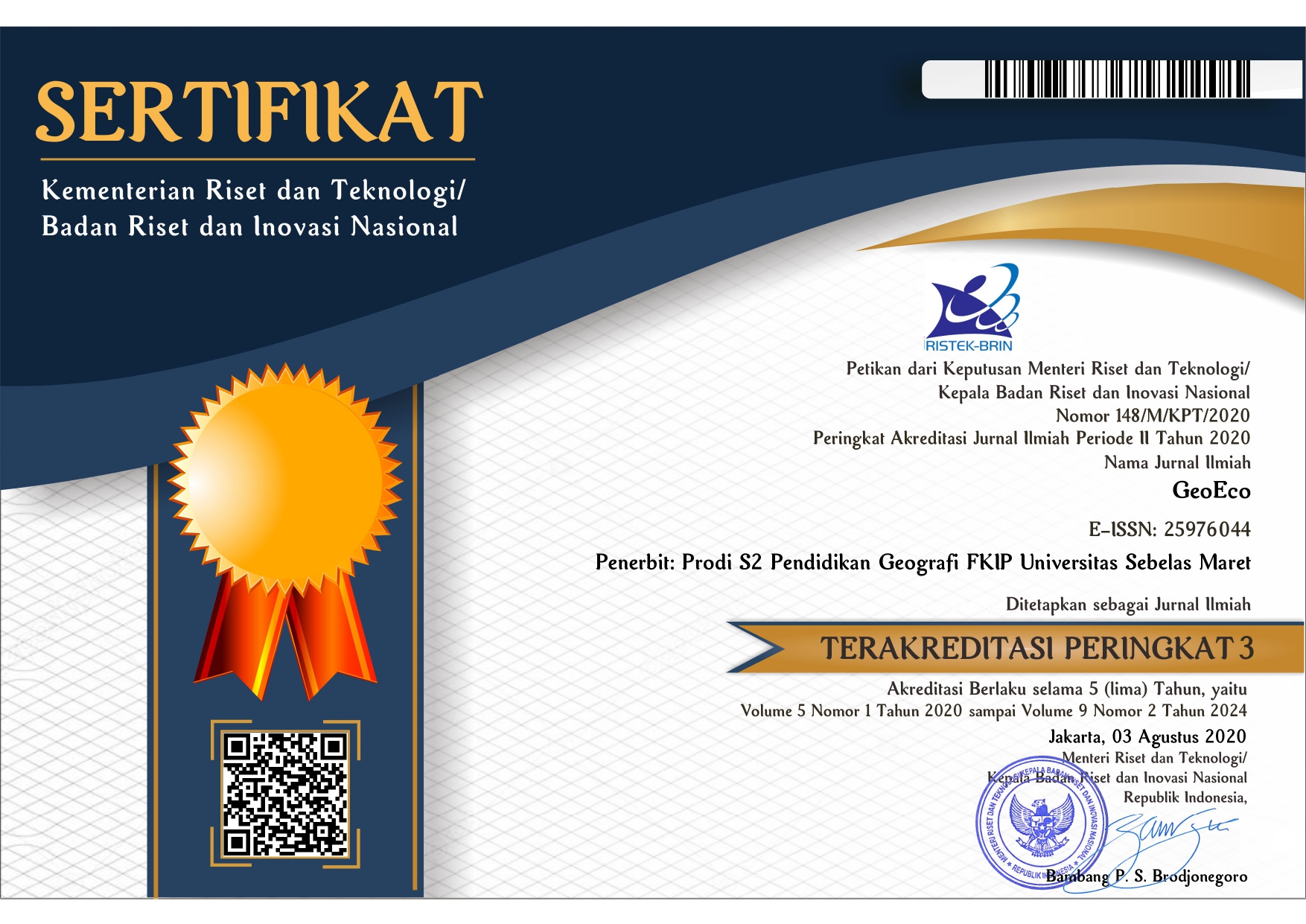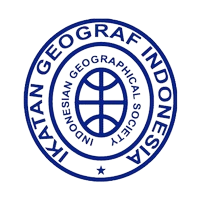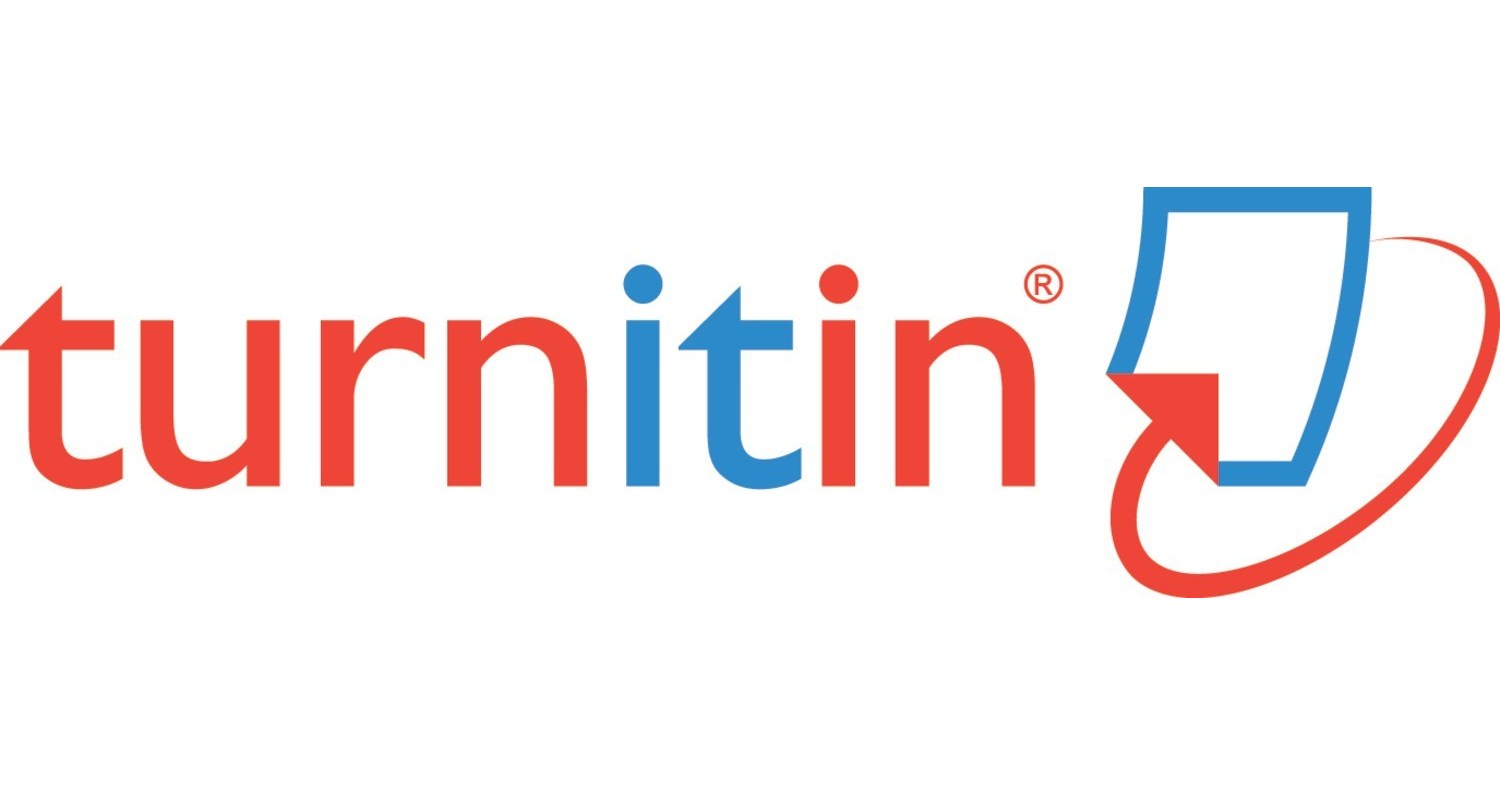THE INNOVATION OF TEACHING MATERIALS BASED ON LOCAL WISDOM FOR DISASTER MITIGATION SUBJECT
Abstract
Teaching material is one of the learning components that used to assist the students understand a material. To fulfill this function, at least the material provided is relevant to the students’ daily life. Therefore, it is necessary to develop teaching material that meets the concept of contextual learning. The purpose of this research was to produce teaching materials that are suitable to be used by developing a base of local wisdom. Local wisdom were chosen due to they are related to the concept of disaster mitigation, and are close to the students’ daily life. Research method used the Borg & Gall stage which was then adapted into, (1) collecting information and need analysis; (2) planning; (3) teaching material development; (4) prototype testing; (5) prototype revision; (6) model testing; (7) model revision. Through this stage, research product in the form of teaching materials was assessed for its feasibility by several experts and also tested on students as users. Product is targeted to gain a positive response from users with an average score above 70% which indicates that it is quite feasible to be implemented in learning, so that it may be an alternative as a learning resource besides using other textbooks.
Keywords
Full Text:
PDFReferences
Aka, K. A. (2019). Integration Borg & Gall (1983) and Lee & Owen (2004) models as an alternative model of design-based research of interactive multimedia in elementary school. Journal of Physics: Conference Series, 1318(1). https://doi.org/10.1088/1742-6596/1318/1/012022 Akbar, S. (2013). Intrumen Perangkat Pembelajaran (1st ed.). Rosdakarya. Butzer, K. W. (1982). Archaeology as Human Ecology. In Archaeology as Human Ecology. https://doi.org/10.1017/cbo9780511558245 Desfandi, M. (2014). Urgensi Kurikulum Pendidikan Kebencanaan Berbasis Kearifan Lokal di Indonesia [The urgency of disaster education curriculum based on local wisdom in Indonesia}. Sosio Didaktika Sosial Science Education Journal, 1(2). Dewanti, D. S., Ayuwat, D., & Yongvanit, S. (2019). Household disaster management capacities in disaster prone II area of Mt. Slamet. Jamba: Journal of Disaster Risk Studies, 11(1), 1–8. https://doi.org/10.4102/jamba.v11i1.649 Dewi, D. R., & Hamami, T. (2019). Pengembangan Kurikulum di Indonesia Menghadapi Tuntutan Kompetensi Abad Ke-21. As-Salam I, 7. Gudinavičius, A., & Šuminas, A. (2018). Choosing a book by its cover: analysis of a reader’s choice. Journal of Documentation, 74(2), 430–446. https://doi.org/10.1108/JD-09-2016-0111 Hautopp, H., & Buhl, M. (2020). Teaching visual facilitation and sketching for digital learning design in higher education. Proceedings of the European Conference on E-Learning, ECEL, 2020-Octob, 235–242. https://doi.org/10.34190/EEL.20.025 Kaygisiz, Ç. (2019). Applied linguistics perspective in developing reading material. Pegem Egitim ve Ogretim Dergisi, 9(4), 1063–1080. https://doi.org/10.14527/pegegog.2019.034 Ozdamli, F., & Ozdal, H. (2018). Developing an instructional design for the design of infographics and the evaluation of infographic usage in teaching based on teacher and student opinions. Eurasia Journal of Mathematics, Science and Technology Education, 14(4), 1197–1219. https://doi.org/10.29333/ejmste/81868 Parmin, Sajidan, Ashadi, Sutikno, & maretta, Y. (2016). Preparing prospective teachers in integrating science and local wisdom through practicing open inquiry. Journal of Turkish Science Education, 13(2), 3–14. https://doi.org/10.12973/tused.10163a Pornpimon, C., Wallapha, A., & Prayuth, C. (2014). Strategy Challenges the Local Wisdom Applications Sustainability in Schools. Procedia - Social and Behavioral Sciences, 112(Iceepsy 2013), 626–634. https://doi.org/10.1016/j.sbspro.2014.01.1210 Prastowo, A. (2015). Panduan Kreatif Membuat Bahan Ajar Kreatif. Diva Press. Saglam, H. I. (2011). An investigation on teaching materials used in social studies. Turkish Online Journal of Educational Technology, 10(1), 36–44. Setyosari, P. (2013). Metode Penelitian Pendidikan dan Pengembangan. Kencana Prenada Media Group. Shin, Y., Kim, D., & Jung, J. (2018). The effects of representation tool (visible-annotation) types to support knowledge building in computer-supported collaborative learning. Educational Technology and Society, 21(2), 98–110. Suarmika, P. E., & Utama, E. G. (2017). Pendidikan Mitigasi Bencana di Sekolah Dasar. Jurnal Pendidikan Dasar Indonesia, 2(September), 18–24. Subandi, A., Alim, S., Haryanti, F., & Prabandari, Y. S. (2019). Training on modified model of programme for enhancement of emergency response flood preparedness based on the local wisdom of Jambi community. Jàmbá Journal of Disaster Risk Studies, 11(1), 1–10. https://doi.org/10.4102/jamba.v11i1.801 Sugiyono. (2016). Metode Penelitian Pendidikan (23rd ed.). CV Alfabeta. www.cvalfabeta.com Sulistyowati, P., & Putri, N. M. (2018). Pengembangan Bahan Ajar Modul Berbasis Contextual Teaching and Learning (CTL) Kelas IV Tema 3 Subtema 1. Jurnal Pendidikan (Teori Dan Praktik), 3(1), 1. https://doi.org/10.26740/jp.v3n1.p1-6 Tanjung, A., & Fahmi, M. (2015). URGENSI PENGEMBANGAN BAHAN AJAR GEOGRAFI BERBASIS KEARIFAN LOKAL. Jurnal Pendidikan Geografi, 1, 1–6. https://doi.org/10.1017/CBO9781107415324.004 Thamrin, H. (2013). Kearifan Lokal dalam Pelestarian Lingkungan ( The Lokal Wisdom in Environmental Sustainable ). Kutubkhanah, 16(1), 46–59.
Refbacks
- There are currently no refbacks.












.png)

